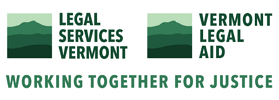Habitability and Heating in Rental Housing: Weatherization Help in Vermont
Has your rental unit been flooded?
See our special content about flooding. Then use the links on those pages to contact us with questions.
What should you do if you live in a rental unit that has bad conditions?
Vermont’s “warranty of habitability” requires landlords to keep their property “safe, clean and fit for human habitation” and to “comply with the requirements of applicable building, housing and health regulations.” Once the temperature outside is less than 55º, the heating system needs to work, and room temperatures must be able to reach at least 65º without overheating one room as a way to heat adjacent rooms. If heat is included in a rental agreement, heat must be provided once the outside temperature is less than 55º. The warranty of habitability cannot be waived.
If a tenant discovers a defective condition in their rental housing, they should notify their landlord and let them know about the Weatherization Assistance Program. It is described below. Tenants can find out more about their legal rights under the warranty of habitability by following this link.
If a landlord refuses to make repairs, learn what to do.
Weatherization Assistance Program
The Weatherization Assistance Program can improve the energy efficiency, safety, and comfort of Vermont rental properties, increasing their value for the landlord and helping tenants save money on energy bills. On average, the Weatherization Assistance Program makes about $10,000 worth of improvements per home, with no landlord match.
Who is eligible?
Properties (not tenants) can only receive weatherization assistance once every fifteen years. Tenants and landlords must both be willing to participate. Tenants must fall into at least one of the following four categories:
- Tenants who are below program income limits.
- Tenants who receive seasonal fuel assistance (below 185% FPL).
- Tenant households where at least one person gets SSI.
- Households in which an adult receives Reach Up benefits (child-only Reach Up does not count).
What kind of services are available and what kind of improvements can be done?
- Whole-house energy assessments and building diagnostics.
- Full-service energy efficient retrofits, including improving insulation and air-sealing. For 1-4 unit properties, the program may also be able to assist with indoor air quality issues, like bathroom ventilation.
How can tenants and landlords apply or get more information?
- For single-unit weatherization, applications are handled by local agencies near you. Find your local agency here to apply.
- For multi-family properties of 5 units or more, contact a local agency above or 3E Thermal (statewide).
Other programs
Explore other programs that can help you with Heat, Energy and Water Assistance.
